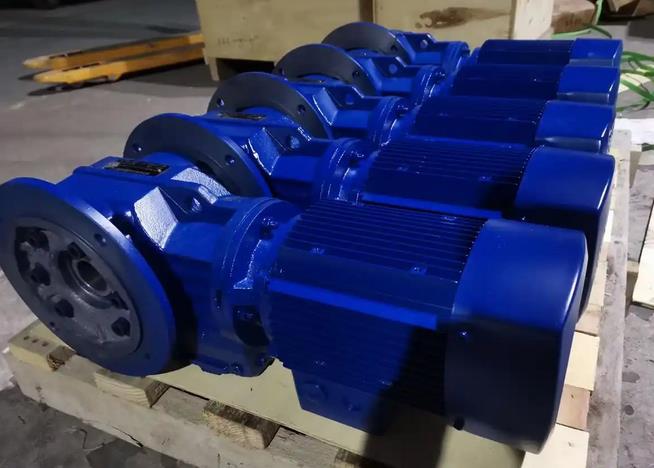Introduce the techniques for judging the quality of SAF77-35.94-4KW worm gear reducer in practical applications
In practical applications, the quality of SAF77-35.94-4KW worm gear reducer can be judged from the following aspects:Appearance inspection: High quality SAF77 reducers usually have a delicate appearance, with even and smooth paint, no obvious defects, bubbles or flow marks, indicating that the manufacturer has a standardized surface treatment process. At the same time, the surface of the casting should be smooth and free of casting defects such as sand holes and air holes, as these defects may affect the strength and sealing of the gearbox. In addition, the nameplate information of the reducer should be clear and complete, including model, specifications, production date, manufacturer and other information, which helps trace the source and quality assurance of the product.

Sound and vibration: Listen carefully to the sound of the gearbox during operation. A high-quality SAF77 gearbox runs smoothly, with a uniform and soft sound, usually only slight gear meshing and shaft rotation sounds, without any abnormal noise, impact or whistling. Abnormal sounds may indicate issues such as gear wear, bearing damage, or improper installation of internal components. Meanwhile, observe the vibration of the gearbox. Under normal circumstances, the vibration amplitude of the gearbox is relatively small. If the vibration is obvious, it may be caused by loose installation of the reducer, gear imbalance or other internal faults, which will affect the service life and transmission efficiency of the reducer.
Temperature change: After running for a period of time, touch the outer shell of the gearbox and feel its temperature change. A high-quality gearbox has a relatively slow temperature rise under normal working conditions and remains stable within a certain range. Generally speaking, the oil temperature of the reducer should not exceed 80 ℃. If the oil temperature is too high, it may be caused by poor lubrication inside the reducer, poor gear meshing, excessive load, or poor heat dissipation conditions. Long term high-temperature operation will accelerate the aging of lubricating oil and wear of components, reducing the service life of the gearbox.
Lubricating oil inspection: Regularly inspecting the lubricating oil of the gearbox is one of the important methods to determine its quality. Firstly, observe the color and transparency of the lubricating oil. New lubricating oil is usually clear and transparent in color. If the lubricating oil turns black, turbid, or contains impurities, it indicates that the lubricating oil has been contaminated or oxidized, which may be due to the presence of wear particles or poor sealing inside the gearbox, causing external impurities to enter. Secondly, check the level of lubricating oil, which should be within the specified range. Low liquid level may lead to insufficient lubrication and increase component wear; If the liquid level is too high, it may cause an increase in oil temperature and seal leakage. In addition, one can also determine whether the lubricating oil has deteriorated by smelling its odor, as deteriorated lubricating oil may have a pungent odor.


